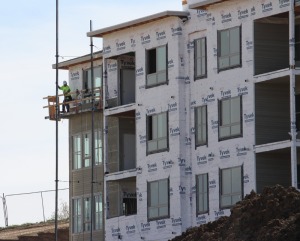In a case with national ramifications, the Department of Housing & Urban Development (HUD) has effectively given up on its efforts to impose high-density housing on low-density suburbs in the name of racial integration. HUD had ordered Westchester County, New York, to build low-income housing in response to claims that county zoning led to segregated housing.

This was widely seen as the model for HUD’s affirmatively furthering fair housing rule, which requires local governments that have received federal housing funds to review local housing patterns with the de facto assumption that, if the community is not perfectly integrated, whatever segregation exists must be due to local zoning rules making housing less affordable.
In response to HUD’s order, Westchester County had submitted an analysis finding that, while the county was not perfectly integrated, local zoning was not the cause. The Obama administration had rejected this analysis, but the current administration accepted a new analysis that “essentially the same” as the rejected one.
There are at least two problems with the assumptions behind the Westchester case and the Obama administration’s rule. First, with or without zoning, homeowners tend to sort themselves into neighborhoods by income. For example, high-income people are more likely to shop at Whole Foods while low-income people are more likely to shop at Walmart, so people locating in neighborhoods close to their preferred retailer will end up segregating themselves by income. You can find this sorting in unzoned Houston and its unzoned suburbs just as much as in zoned Dallas or anywhere else, showing that income segregation may have nothing to do with racial discrimination.
![]() Second, contrary to Obama administration claims, local zoning of developed areas doesn’t make housing less affordable; instead, unaffordability results from regional zoning, i.e., zoning that restricts the use of undeveloped land. Attempts to counter regional zoning with subsidized housing are doomed to fail because it would take massive amounts of housing subsidies to overcome land shortages.
Second, contrary to Obama administration claims, local zoning of developed areas doesn’t make housing less affordable; instead, unaffordability results from regional zoning, i.e., zoning that restricts the use of undeveloped land. Attempts to counter regional zoning with subsidized housing are doomed to fail because it would take massive amounts of housing subsidies to overcome land shortages.
A third problem is that a hidden agenda behind the Obama rule was to promote the New Urbanist goal (sometimes called smart growth) of turning suburbs into high-density, mixed-use Greenwich Villages, based on the Jane Jacobs’ view that Greenwich Village in New York City was the ideal urban design. But New Urban villages can often be more expensive, not less, than traditional low-density suburbs because both land and construction costs are higher in dense areas.
Under Secretary Carson, HUD appears to be turning away from the New Urbanist view. But more work must be done: the administration must repeal the affirmatively furthering fair housing rule and appoint people to top HUD positions who are more sympathetic to the rights of suburbanites to live in low-density neighborhoods.
Randal O’Toole is director of the Transportation Policy Center at the Independence Institute, a free market think tank in Denver. A version of this piece originally appeared in his blog, Theantiplanner.


